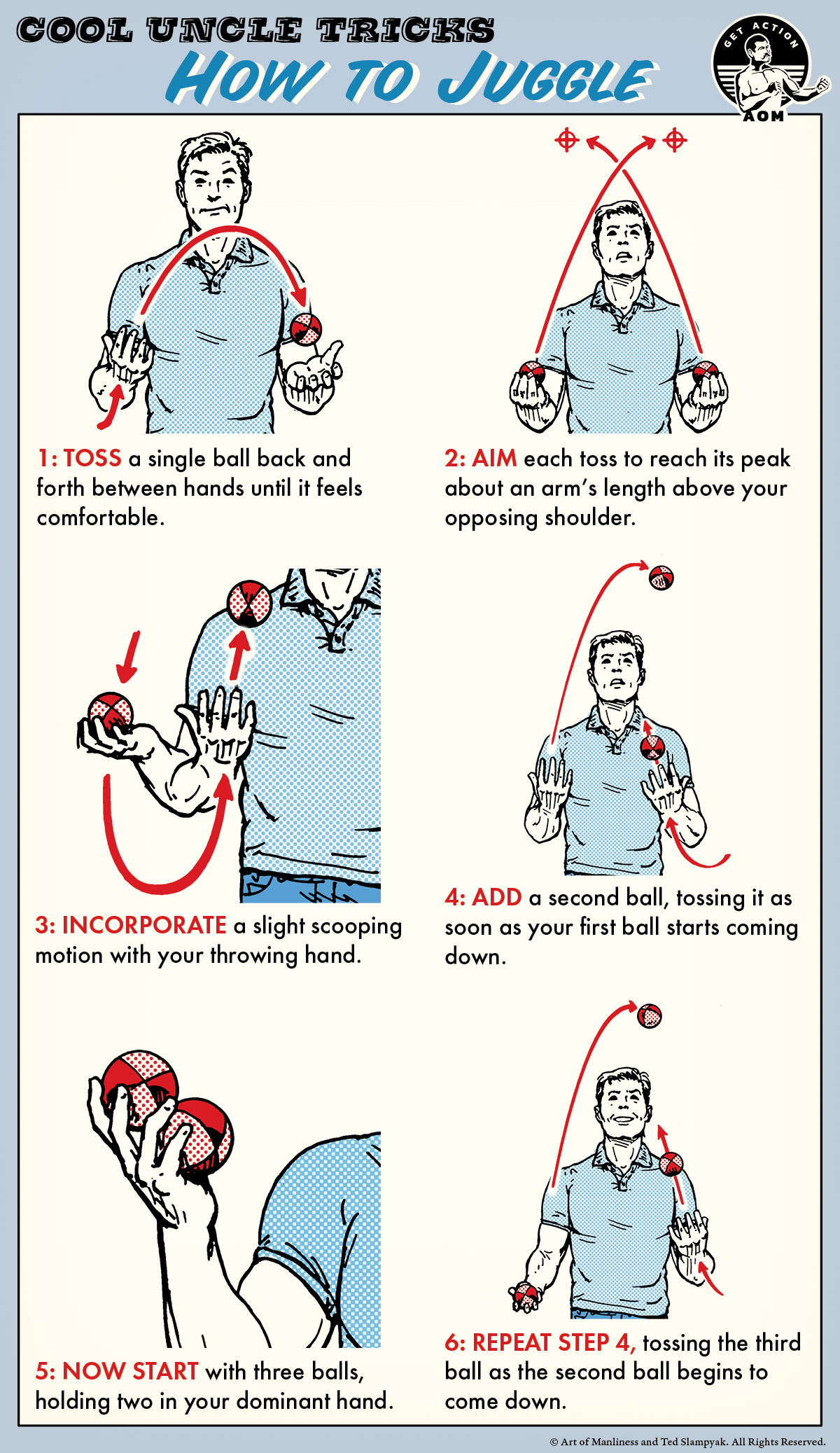
An essential part of being an awesome uncle is having a repertoire of tricks and jokes that will amaze your nieces and nephews, and crack them up. So from time to time we’ll be offering you current and future uncles out there a tutorial on some gags that’ll have your siblings’ kids thinking you’re the coolest dude in the world. Check out all our Cool Uncle Tricks.
Cool uncle tricks run the gamut, but what really defines a cool uncle trick is a teachable skill, that’s a lot of fun to watch and do, that also that seems like pure magic when a kid first sees it. That’s what makes juggling the perfect addition to one’s cool uncle repertoire. It’s also a perfect skill for kids to learn. Even Niels Duinker, the comedy juggling wunderkind and world record holder from the Netherlands, learned the art of juggling balls as a child.
There are lots of ways to learn to juggle. You might have learned in elementary school by juggling scarves, but most pro jugglers discourage this method of learning. While it does allow you to quickly “juggle,†it doesn’t teach you the foundational skills required to successfully juggle more traditional objects like balls, bowling pins, or better yet, flaming torches!
The step-by-step method illustrated above starts with the fundamentals of the cascade pattern, which is the most basic type of juggling and a perfect place to start. Learning this way may take longer, and seem more frustrating in the beginning, but the results are far more reliable. Basically, you start small and slow with one ball in your dominant hand (it doesn’t matter if it’s your right hand or your left hand, just follow the instructions accordingly), incorporating all the techniques you’ll need when you graduate to 3-ball juggling: keeping the ball just above eye level on your tosses, getting your non-dominant hand comfortable. Then, you work your way up to a second ball, and finally, a third ball, at which point you will be doing the “three-ball cascade.” In other words, tThe steps featured here represent the major milestones of learning to juggle. Don’t move on from a step until you are completely comfortable with the skill you just learned.
For your first juggling lesson, balls or bean bags are great options. What you don’t want to use is anything that’s too light or too bouncy. Objects that are too light are more difficult to catch, and if you use bouncy tennis balls you’ll spend most of your time chasing after them. No matter what you use, expect to drop things a lot in the beginning; it’s all part of the process of honing your circus-ready craft.

